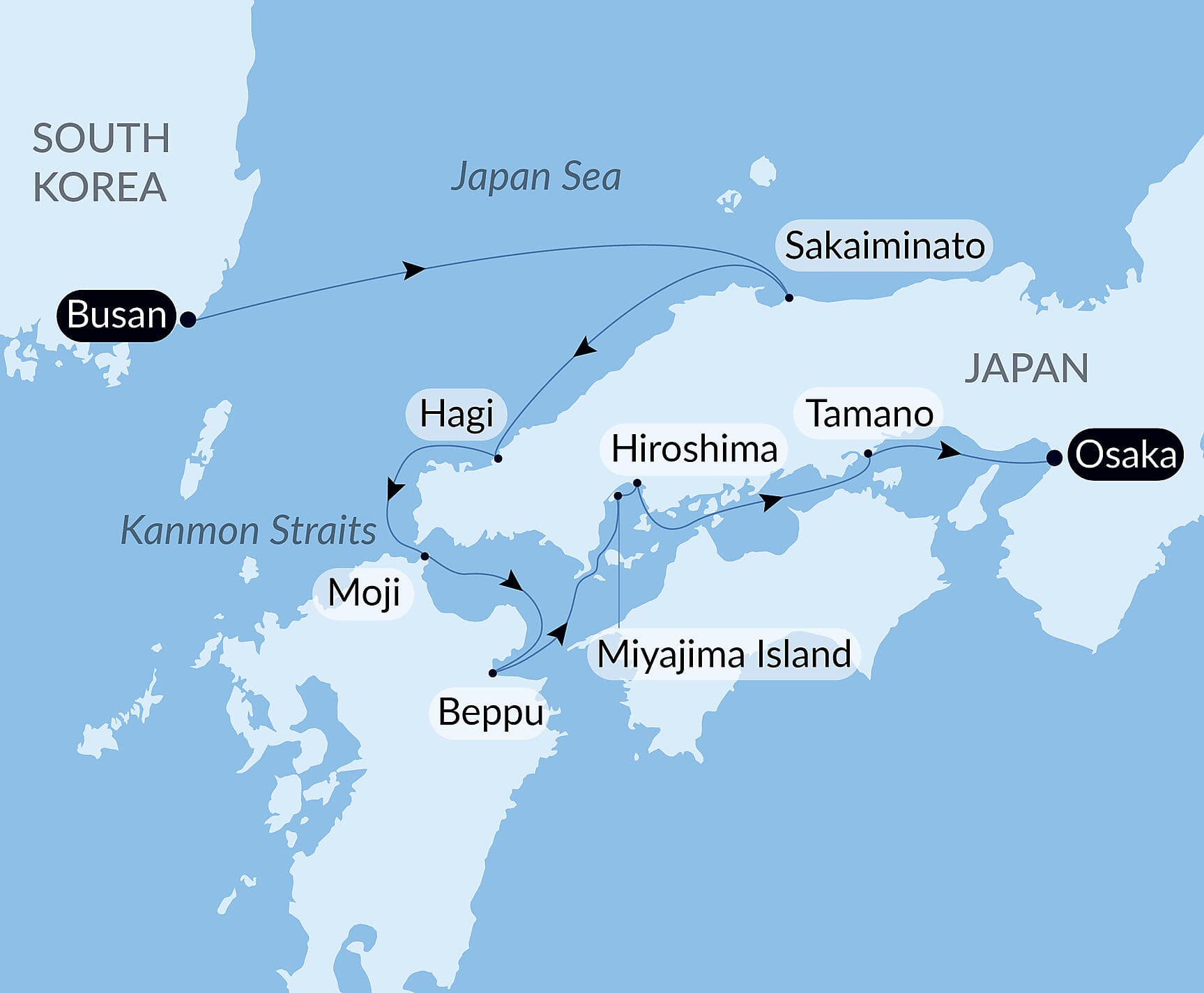Asia
4 reasons why
Discover Asia
19 cruises in Asia
From
Guam (Guam)
To
Osaka (Japan)
5 nightsaboard the shipLe Soléal
Next departure
From
Ishigaki (Japan)
To
Benoa, Bali (Indonesia)
10 nightsaboard the shipLe Jacques Cartier
Next departure


Treasures of Japan and South Korea by Sea – with Smithsonian Journeys
From
Busan (South Korea)
To
Osaka (Japan)
8 nightsaboard the shipLe Soléal
Next departure


Voyage to Indonesia: Dragons, Reefs, and the Spice Islands – with Smithsonian Journeys
From
Benoa, Bali (Indonesia)
To
Darwin (Australia)
11 nightsaboard the shipLe Jacques Cartier
Next departure
From
Benoa, Bali (Indonesia)
To
Darwin (Australia)
13 nightsaboard the shipLe Soléal
Next departure
From
Benoa, Bali (Indonesia)
To
Benoa, Bali (Indonesia)
15 nightsaboard the shipLe Jacques Cartier
Next departure
From
Benoa, Bali (Indonesia)
To
Singapore (Singapore)
14 nightsaboard the shipLe Jacques Cartier
Next departure
From
$14,160 /person*


Coastal Vietnam by Sea: Singapore to Hong Kong – with Smithsonian Journeys
From
Singapore (Singapore)
To
Hong Kong (Hong Kong)
14 nightsaboard the shipLe Jacques Cartier
Next departure
From
Hong Kong (Hong Kong)
To
Naha, Okinawa (Japan)
12 nightsaboard the shipLe Jacques Cartier
Next departure
Offer(s)
No single supplement, Winter Offer: 10% Savings per guest, PONANT Bonus 15%
From
$11,790 /person*
From
Naha, Okinawa (Japan)
To
Kobe (Japan)
13 nightsaboard the shipLe Jacques Cartier
Next departure
From
$15,670 /person*
From
Osaka (Japan)
To
Busan (South Korea)
8 nightsaboard the shipLe Soléal
Next departure


Treasures of Japan and South Korea by Sea – with Smithsonian Journeys
From
Osaka (Japan)
To
Busan (South Korea)
8 nightsaboard the shipLe Soléal
Next departure
Offer(s)
Back to back offer, No single supplement, Winter Offer: 10% Savings per guest, PONANT Bonus 5%
From
$11,670 /person*
*Price is per person, based on double occupancy, based on availability, and subject to change at any time. The category of stateroom to which this price applies may no longer be available.
Inspiration
The must-sees of Asia




See all cruises in Asia
Explore

Ports of call in Asia
The most beautiful way to experience Asia is to approach its ports of call on a cruise. Each country offers unique experiences: sailing in Halong Bay, exploring the terraced rice fields in Bali, facing Mount Fuji in Japan, discovering the cosmopolitan cities of Hong Kong, Shanghai, Bangkok or Singapore... Between ancient traditions and megacities looking towards the future, immerse yourself in the rhythm of the Far East.
Discover our cruises in Asia going through
- Amakusa Region (Japan)
- Amamioshima (Japan)
- Ana Marina (Nha Trang) (Vietnam)
- Asmat, Papua (Indonesia)
- At sea (-)
- Badas, Sumbawa (Indonesia)
- Banda Aceh, Sumatra (Indonesia)
- Banda Neira, Maluku Islands (Indonesia)
- Banyak Islands (Indonesia)
- Barat Daya Islands (Indonesia)
- Baucau (East Timor)
- Bengkulu, Sumatra (Indonesia)
- Benoa, Bali (Indonesia)
- Beppu, Oita (Japan)
- Busan (South Korea)
- Cairns (Australia)
- Cape York (Australia)
- Chan May (Vietnam)
- Crossing the Kanmon Straits (Japan)
- Côn Dao Islands (Vietnam)
- Da Nang (Vietnam)
- Darwin (Australia)
- Dili (East Timor)
- Guam (Guam)
- Ha Long (Vietnam)
- Hagi (Japan)
- Hiroshima (Japan)
- Ho Chi Minh City (Saigon) (Vietnam)
- Hong Kong (Hong Kong)
- Iheyajima (Japan)
- Iki Island (Japan)
- Iriomotejima (Japan)
- Ishigaki (Japan)
- Jeju (South Korea)
- Kagoshima (Japan)
- Kalabahi, Alor (Indonesia)
- Keelung (Chilung) (Taiwan)
- Kei Islands, Maluku Islands (Indonesia)
- Kikaijima (Japan)
- Kitikiti Waterfall, Mommon (Indonesia)
- Kobe (Japan)
- Kochi (Japan)
- Komodo National Park (Indonesia)
- Koshikijima Islands (Japan)
- Kumejima (Japan)
- Lizard Island (Australia)
- Malacca (Malaysia)
- Maumere, Flores (Indonesia)
- Mentawai Islands, Sumatra (Indonesia)
- Mitarai (Japan)
- Miyajima Island (Japan)
- Miyakojima (Japan)
- Miyanoura, Yakushima (Japan)
- Miyazaki (Japan)
- Moji, Kitakyushu (Japan)
- Motobu, Okinawa (Japan)
- Nagasaki (Japan)
- Naha, Okinawa (Japan)
- Onomichi (Japan)
- Osaka (Japan)
- Probolinggo, Java (Indonesia)
- Pulau Nias, Greater Sunda Islands (Indonesia)
- Quy Nhon (Vietnam)
- Sailing Saigon River (Vietnam)
- Sailing along Krakatoa (Indonesia)
- Sakaiminato (Japan)
- Semarang (Indonesia)
- Shimokamagari (Japan)
- Shimonoseki (Japan)
- Shingu (Japan)
- Singapore (Singapore)
- Taketomijima (Japan)
- Tamano (Japan)
- Tomonoura (Japan)
- Triton Bay, West Papua (Indonesia)
- Ujung Kulon National Park, Java (Indonesia)
- Uwajima (Japan)
- Yakushima (Japan)
- Yonagunijima (Japan)
- Zamami (Japan)
More Inspiration
Upcoming departures, unique experiences, interviews, exploration or scouting stories — all brochures can be ordered in print or downloaded in digital format.
Destinations




















